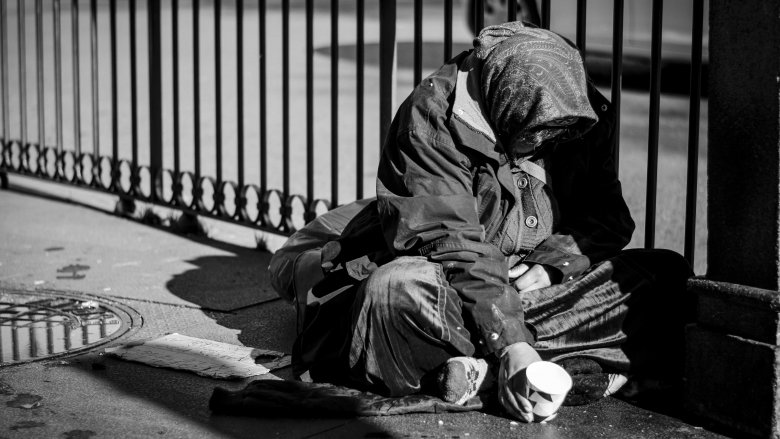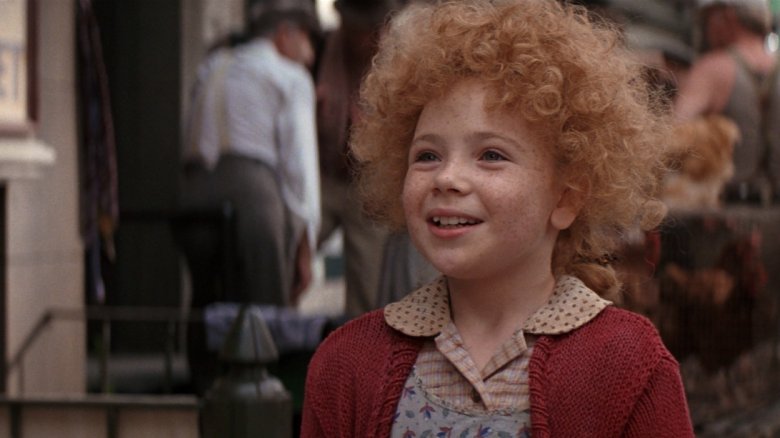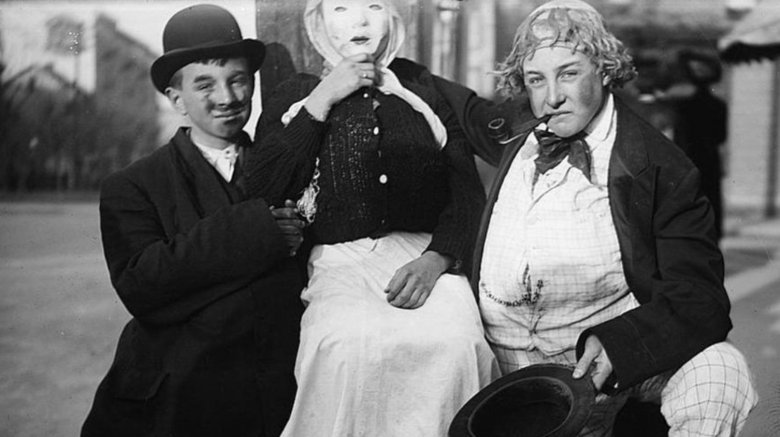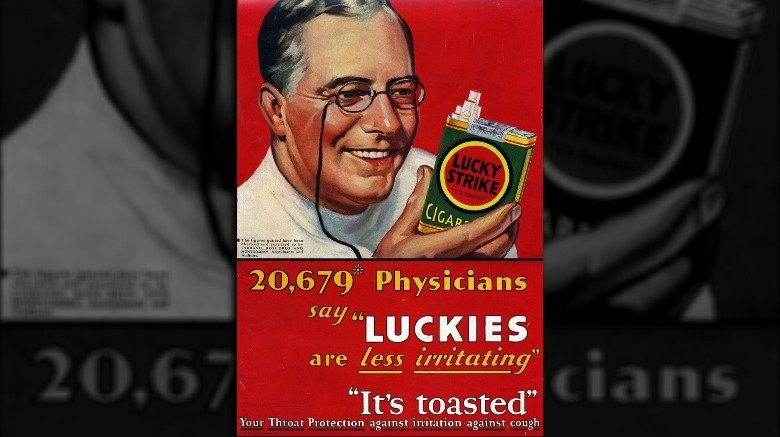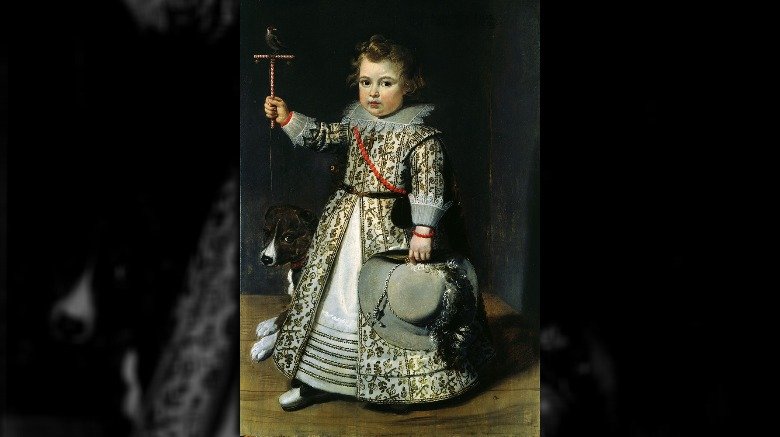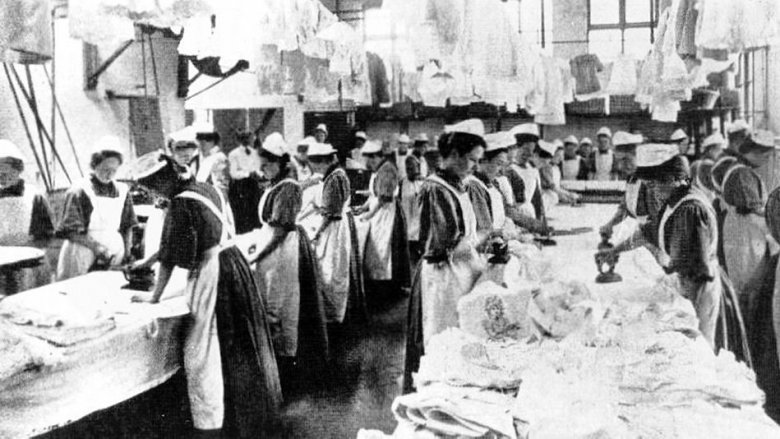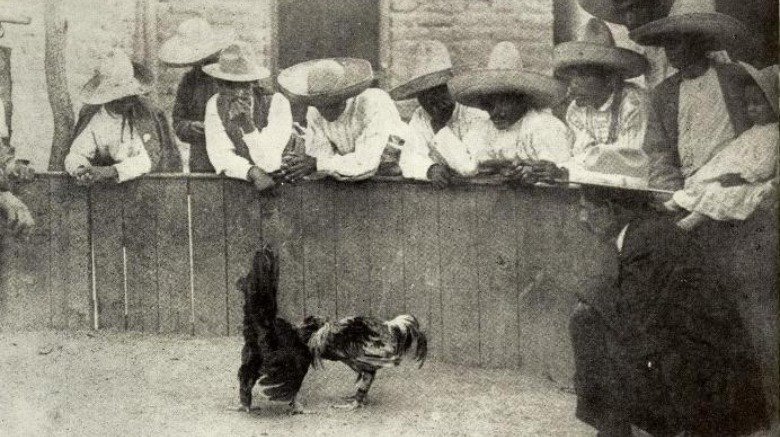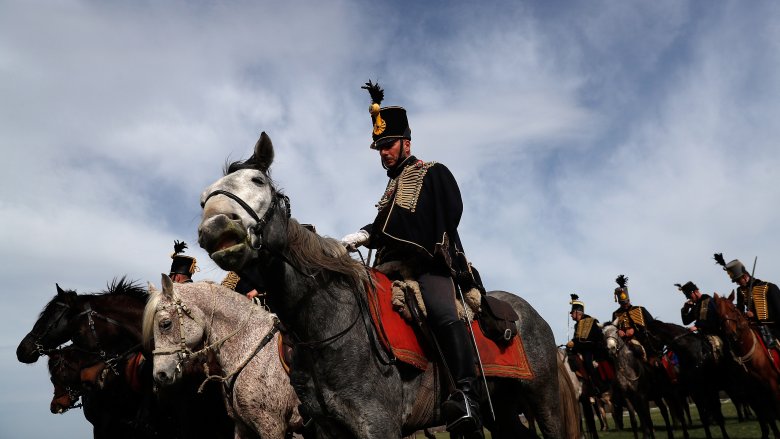Things That Were Normal 100 Years Ago That Are Strange Now
Human beings are an ever-evolving species. Once, we carried spears and created fantastic works of art on the walls of French caves. Today, we carry smartphones and trip over things because we don't ever look where we're going. Yes, the human species gets better and better all the time.
Since the Industrial Revolution, things have changed at such a blindingly fast pace that we sometimes forget just how weird the world used to be. (Because it's not at all weird anymore, right?) Things that were once commonplace seem strange or even bizarre today, although it's probably also true that humans who lived 100 years ago would think the things we do are pretty strange and bizarre. Sadly, we don't have any way to actually show an early 20th-century person a YouTube video of someone eating a Tide Pod. But we can at least enjoy our own bemusement at the strange and bizarre habits of our recent ancestors, mostly because it's okay to make fun of people who have been dead for decades.
When ugly was illegal
This sounds like the plot of post-apocalyptic fiction but sadly, it's actually pre-apocalyptic non-fiction. One hundred years ago, in many big cities in the United States, it was illegal to be ugly.
Let's take Chicago as an example. According to the Chicago Tribune, in 1881, Alderman James Peevey decided he'd had enough of the eyeball-assaulting horrors of other people's misfortune, so he introduced an ordinance to ban people who were "diseased, maimed, mutilated, or in any way deformed, so as to be an unsightly or disgusting object" from the streets of Chicago, where they might make people uncomfortable. If you were deemed too ugly to be in public, you had to pay a fine of $1 to $50 (which was a decent sum in those days) or go to the poorhouse, which was kind of like an insane asylum for poor people.
After World War I, when veterans returned home with missing limbs and other disfiguring battle scars, public opinion toward the disabled started to change, but ugly laws remained on the books and their enforcement continued up until the 1950s. Chicago's ugly law wasn't officially dropped until 1974.
Now we'd love to say we're way more enlightened today but fat-shaming is still a thing, so collective enlightenment is perhaps still forthcoming. But at least fat-shaming isn't written into law.
It was a hard knock life
What would literature be without the lowly orphan, consigned to a sad life of scrubbing floors with toothbrushes and sharing a bedroom with 25 similarly unfortunate children, only to be occasionally saved by kindly millionaires and giants who are bad at pronouncing things? Orphanages are ubiquitous in children's stories, but they aren't really a thing anymore, at least not in the Little Orphan Annie sense of the word.
The first American orphanage was established in 1729, after a massacre took out most of the adults in a Mississippi settlement. Before that, kids who lost their parents went to live with relatives, were apprenticed to tradesmen, or ended up begging on city streets. According to Virginia Commonwealth University, the American practice of stuffing kids into orphanages (even though many of them weren't even orphans, but the children of poor, single mothers) didn't really start to come into question until the 1920s, when most states implemented "mother's pensions." That gave poor mothers the financial ability to care for their own children rather than placing them in institutionalized care. Orphanages started to phase out in the early 20th century, although they do still exist in another form — orphans today are sometimes put in group homes when there aren't enough foster families to take them in. You won't find kids dressed in rags with shaved heads scrubbing the floors with toothbrushes in any of these modern facilities, though, and probably not too many kindly millionaires, either.
Trick or turkey
Before there was Halloween there was Thanksgiving. No, really. People used to dress up in costumes, run around the city streets making noise, and go to costume parties. On Thanksgiving.
According to NPR, the tradition was so well loved that in 1897 the LA Times reported that Thanksgiving was "the busiest time of the year for manufacturers of and dealers in masks and false faces." And if that isn't enough to make your head spin, costumed kids would also march in troops around their neighborhoods and ask adults "Anything for Thanksgiving?" And then the adults would give them candy. Oh-kay.
The custom bothered a lot of people. In fact, New York's school superintendent, who was almost certainly related to the guy who came up with the whole ugly law thing, complained that the tradition seemed designed to mostly just "annoy adults" and was incompatible with "modernity." Anyway, it might surprise you to hear that this particular Thanksgiving tradition is sort of still around, only now you mostly only see elaborate Thanksgiving costumes in the Macy's Thanksgiving Day Parade.
Kids really didn't want to give up the whole candy-getting thing, though, and by the 1930s the practice of going door to door in search of treats became a Halloween tradition, although it was mostly an organized event meant to curtail Halloween vandalism and violence — hence the expression "trick or treat."
When cigarettes cured asthma
As it turns out, Doctor Oz wasn't actually the first bona-fide doctor to give terrible medical advice — 100 years ago it was not only common for doctors to dismiss the risks of smoking, but sometimes they would also appear in tobacco advertising saying things like, cigarettes provide "temporary relief of paroxysms of asthma." Now these ads often featured very doctorly-looking faces and declared such nonsense as "20,679 physicians agree" that cigarettes are awesome and "an eminent scientist writes" that cigarettes are no worse for you than a glass of water. However, the doctors and eminent scientists would usually remain conspicuously unnamed.
The reason cigarette companies did this is pretty insidious — by the early 20th century, most people were kind of catching on to the whole cigarettes-might-be-bad-for-you thing, which is what consumers will naturally will do when they notice that a product seems to be associated with people dying. What's even sadder, of course, is that those doctor-endorsed cigarette ads persisted well into the '60s, when the surgeon general finally said, "Hey, guess what, you've all been right all along, smoking is bad for you." Well, duh.
Dresses are for everyone
Right or wrong, we live in a world where baby girls wear pink and baby boys wear blue because the consequences of being called a boy when you are really a girl or a girl when you are really a boy are just too horrible to comprehend, or something. A hundred years ago that seems to have mattered a lot less, which is kind of surprising given how uptight people were in the early 20th century compared to the way we are now. It was common, and maybe even fashionable for boys to wear dresses, sometimes up to around the age of 8.
Why, oh why, would people willingly do this to their little boys? According to The Vintage News, no one thought it was weird. And it served a practical purpose — when you're potty training, it's just easier if you're always wearing a dress. Back in the Renaissance this actually made a lot of sense because the fastenings on mens' breeches and trousers were ridiculously complicated, way too complicated for most kids to figure out.
By the late 20th century, people mostly just put boys in dresses because that's what you did. After World War I, the practice seems to have mostly died out, but people still put baby boys in dresses for a few decades after that, though you'll rarely see any photographic evidence, perhaps because men who wore dresses as babies put those pictures in the fire when no one was looking.
Early 20th-century PowerPoint
So before there were smartphones there were television sets, and before there were television sets there were movie screens, and before that cavemen just stared at their own reflections in still ponds because human beings absolutely must have screens to stare at or there's no way they could possibly get on with the business of survival.
In between all of that somewhere was the "magic lantern show," which was an early form of screen entertainment that preceded the movie theater by a couple hundred years and persisted well into the 20th century. According to the Boston Globe, the technology was simple — an artist would paint an image on a piece of glass (like the one above), and then the image would be projected onto a screen, much like a PowerPoint presentation except it was meant to not actually put entire audiences to sleep. In later years magic lantern shows were most popular with secret societies — in one estimate the Masons alone had monthly magic lantern audiences of around 6 million people.
Unsurprisingly, as movies got more popular, magic lantern shows got less popular, until one day people finally said to themselves, "Why am I falling asleep in these boring magic lantern theaters when I can fall asleep in a movie theater instead?" And then magic lantern shows went the way of the Palm Pilot, leaving us all to hope that PowerPoint presentations will one day follow.
Homes for disobedient wives and other crazy people
Today insane asylums mostly exist as ruined buildings that no one wants to turn into something practical, maybe because of the whole terrifyingly haunted thing that always happens to ruined buildings that once kept people imprisoned in a life of filth and horror. On the flip side, former insane asylums now enjoy high status as places of pilgrimage for photographers, so there's that.
America mostly stopped putting people into insane asylums around the same time it stopped putting little kids into orphanages, so hooray for progress. According to the American Psychological Association, though, in the early 20th century mentally ill people were sort of universally assumed to be dangerous, so if you were verifiably "insane" (you know, like if you were a woman and you thought maybe your husband didn't know everything), you were sent to the insane asylum where you got to live out the remainder of your days in deplorable conditions because it was way easier than divorce.
Not everyone who went to an insane asylum was a woman whose husband couldn't be bothered to divorce her — some genuinely mentally ill people were placed there, too, but the places were really more like holes to die in than places where the mentally ill could be rehabilitated and returned to their families. Happily, that started to change with the advent of psychotherapy and with just the general realization that it's not nice to put people in insane asylums.
Because all the wars weren't violent enough
Let's just be clear up front — some really messed up people still like bloodsports. Dog fighting, cockfighting, bull fighting, and fox hunting are still practiced by people who like to say they're upholding a long and glorious tradition but are really just sadistic creeps. That said, most of us would find it strange to see bloodsports in public places because they've been mostly outlawed and also because the vast majority of people don't enjoy watching animals rip each other to pieces. So modern connoisseurs have their bloodsport parties in hiding so actual humans won't find out.
A century ago, though, bloodsports were still totally cool. Now, by then enthusiasts were at least civilized enough to no longer practice "goose pulling" or "fox tossing" anymore, and mainly just stuck with less elaborate and horrible ways of killing animals for the amusement of sadistic people. We probably don't have to describe these sports, really, other than to say cockfighting roosters usually had razor blades taped to their feet, and foxes usually got dismembered by hounds at the end of the hunt.
Now no one will argue that people like to watch violence, but someone really ought to tell bloodsports fans that HBO violence is just as good, and anyone who doesn't think so has clearly never experienced the joy of watching Jon Snow beat the crap out of Ramsay Bolton.
When tanks had hooves
The idea of soldiers riding into battle almost seems quaint in our modern world of tanks and Humvees, but 100 years ago, the cavalry was still alive and well. In fact during World War I the cavalry was still used for reconnaissance and security by the British, French, and Germans. In the East it was used rather more traditionally — Russia alone executed at least 400 cavalry charges on the Eastern Front. But cavalry charges were less effective in the West, and as technology started to produce more reliable tanks and other mechanized vehicles, the cavalry was phased out.
Then something happened that no one really expected — the U.S. ended up in Afghanistan and discovered there are some places you just can't take a tank. According to USA Today, the U.S. Marine Corps is bringing back mounted warfare — not for cavalry charges but for special forces, who often need to move quietly through difficult terrain, which is next to impossible with Humvees.
Not to be deterred, the Pentagon is sinking $62 million into designing a robotic mule, so if you ever needed an example of overspending in the U.S. military, there it is. Imagine how many actual mules $62 million could buy. Of course, if you're planning on being in Afghanistan for another century, maybe the cost balances out. Maybe they should put that question to a bunch of kindergarteners before they decide to commit actual money to the robot cavalry.
